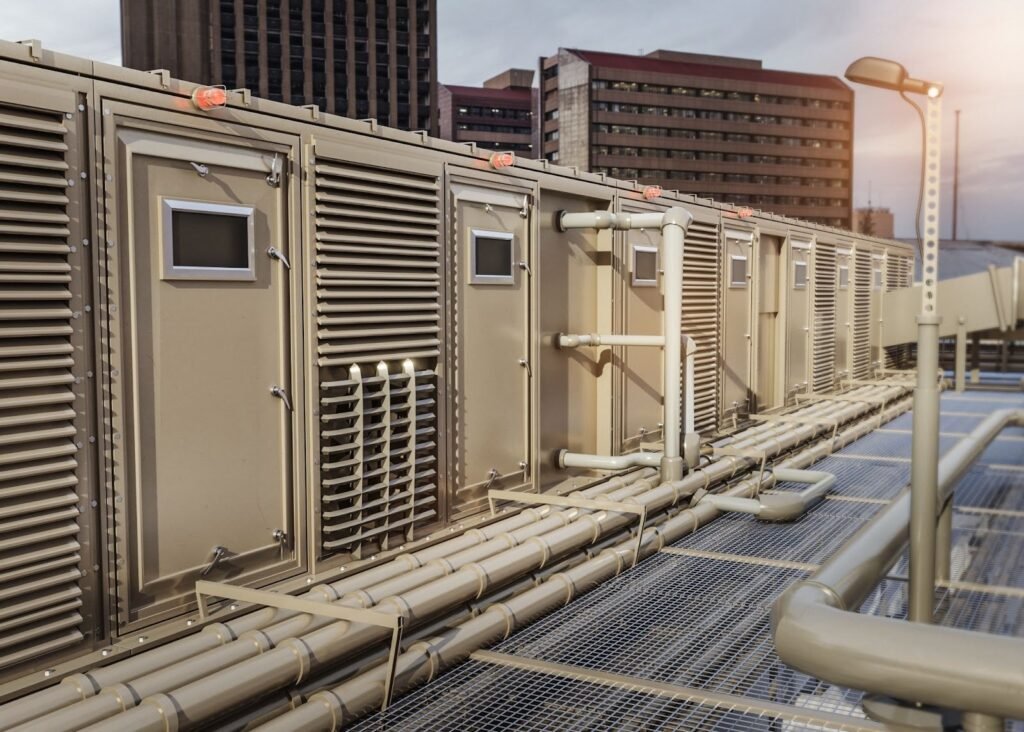The major financial and operational choice that the management should make is the manner in which the air-cooled units are to be acquired. The decision to lease, rent, or purchase can have a great influence on your capital expenditure, operational costs, and business flexibility in the long run.
Buying Air-Cooled Units
Purchasing an air-cooled unit involves a substantial capital expenditure upfront. The equipment becomes an asset on your company’s balance sheet. This approach is generally best suited for businesses with a clear, long-term, and consistent cooling requirement.
Buying demands the greatest amount of capital outlay. Nevertheless, equipment ownership may be the most economical choice in case of stable, permanent installations in the long run. As an example, a business, such as MIRAI INTEX, that manufactures and sells high-technology air-cooled units, could have purchasing options that would be of better energy efficiency and durability.
Advantages of Buying
Businesses that commit to purchasing air-cooled units benefit from several significant financial and operational advantages:
- Long-term cost efficiency, as ownership cost is often lower than cumulative rental or lease payments over the unit’s lifespan.
- Asset on the balance sheet, which is a depreciable asset providing tax advantages through scheduled deductions.
- Total control and autonomy over maintenance schedules, operational adjustments, and customisation of the unit.
- High control over quality, allowing selection of exact specifications and efficiency ratings.
Disadvantages of Buying
Despite the benefits of ownership, the decision to buy is constrained by several immediate and long-term financial risks:
- Significant upfront capital is required, which ties up working capital better suited for core business investments.
- Full maintenance responsibility, including all financial and logistical risks associated with repairs and unexpected breakdowns.
- Lack of flexibility when scaling capacity up or down, making adjustments slow and expensive.
Leasing Air-Cooled Units
Leasing is a contract that enables a business to access an asset over a specific time with payments made to the owner. It serves as a financial intermediary, making modern equipment available without the expensive initial cost of acquisition. Leases are generally long-term (multiple years) and provide a stable financing solution.
The alternative is very appealing to companies in industries where technology is changing fast, like in data centres. The risk of having outdated equipment in the possession of the business is reduced by leasing because the business can upgrade at the expiry of the leasing period.
Advantages of Leasing
Leasing offers a wide range of financial advantages, the first of which is that it allows businesses to have access to high value equipment but with a high level of liquidity:
- Capital preservation, which involves minimum or no down payment, saving the cash flow to other operational requirements.
- The technology is constantly updated, and the business is in direct touch with the newest technology, so the business will never be without the newest and most energy-saving equipment.
- Monthly budgetary rigidity, which makes the administration of the business easier since the payments are evenly distributed within a set time.
- The operating lease payment may often be a fully deductible expense and thus has potential tax benefits.
Disadvantages of Leasing
Leasing arrangements also introduce specific risks related to long-term cost and operational control that businesses must acknowledge:
- Higher total cost over time, as cumulative lease payments often exceed the unit’s initial purchase price.
- Long-term obligation, binding the business into an unchangeable contract, with early termination fees being very high and expensive.
- Basic ownership, i.e. the unit is owned by the lessor, and the business does not develop any equity in the equipment.
- Contractual restrictions that may impose strict limitations on usage, modification, or relocation of the unit.
Renting Air-Cooled Units
The last solution to short-term cooling is renting. Rental duration is normally short, between a few days and a few months.
Advantages of Renting
Renting lessens the load on the business infrastructure in the case of temporary or emergency needs:
- Optimal flexibility, which enables the business to scale cooling capacity up or down on a short notice, depending on extremely variable or seasonal demand.
- Minimal commitment where there are short-term contracts with no long-term financial commitment or capital investment.
- All-inclusive service, where the rental rate normally includes all the required maintenance, servicing and emergency repairs.
- Immediate deployment capabilities, making renting the best contingency plan for emergency equipment failures.
Disadvantages of Renting
Renting is an operationally simple solution, but it comes with substantial financial inefficiencies for extended periods:
- Highest per-unit cost, since the daily or monthly rent is considerably greater than the prorated cost of a unit acquired or leased.
- Expensive to use in the long-term; when the rental duration is longer than a short period, the accruing costs will be inefficient.
- Lack of selection of unit, as the business has to choose the inventory available, which is not always exactly what is required.
- No financial gain, since rental payments are pure operating expenses and do not add to the creation of company equity or allow any tax-deductible depreciation.
Determination of Strategy
The decision between buying, leasing, and renting an air-cooled unit is fundamentally a calculation based on time, technology, and money.
A business with a high cash reserve and a permanent need should be purchased. Leasing should be considered by a business that needs frequent upgrades of its technology and the preservation of cash flows. Renting should always be chosen by any business that has a temporary, seasonal, or emergent cooling need.
If you compare the expected period of requirement with the financial framework of each possibility, you will be able to make a strategic choice to balance the stability of operation and financial responsibility.


